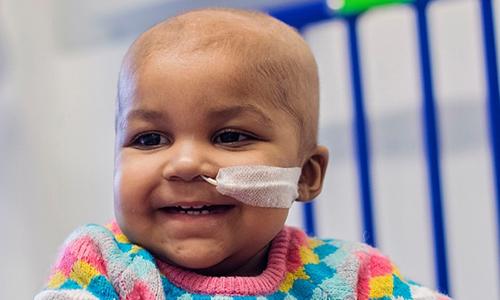Baby first in the world to be treated with 'designer immune cells'
A one-year old baby suffering from aggressive leukaemia has become the first in the world to be treated with designer immune cells that were genetically engineered to cure her cancer.
According to an article in The Guardian, Layla Richards, was given months to live after conventional treatments failed to remove the disease, but she is now cancer free and doing well, a response one doctor described as “almost a miracle”.
Layla was born healthy in June last year, but three months later she developed a fast heartbeat. Doctors suspected nothing more than a stomach bug, but blood tests revealed she had infant acute lymphoblastic leukaemia (ALL).
Specialists at Great Ormond Street Hospital (GOSH) in London treated the baby two months ago and stressed that it could be more than a year before it was clear whether the therapy was successful in curing the disease.
“We have only used this treatment on one very strong little girl, and we have to be cautious about claiming this will be a suitable treatment option for all children,” said Waseem Qasim, professor of cell and gene therapy at University College London’s (UCL) Institute of Child Health, and a consultant immunologist at GOSH.
“But this is a landmark in the use of new gene engineering technology and the effects for this child have been staggering,” he said.
Specialists at GOSH said the therapy could be suitable for five to 10 children with acute lymphoblastic leukaemia in Britain each year. But doctors are keen to modify the therapy to tackle other blood disorders and different types of cancer.
Dr Alan Worsley at Cancer Research UK said: “It’s great news that Layla seems to be doing well so far.
“Re-engineering a patient’s immune cells to target cancer has shown real promise in a small number of patients with leukaemia. This trial has adapted this treatment so that it’s easier to make, and now we need to see if this new approach is effective. Finding a way to make this work in other types of cancer is the next big challenge.”
Caption: Layla Richards
Photo Credit: The Guardian
Related Posts

